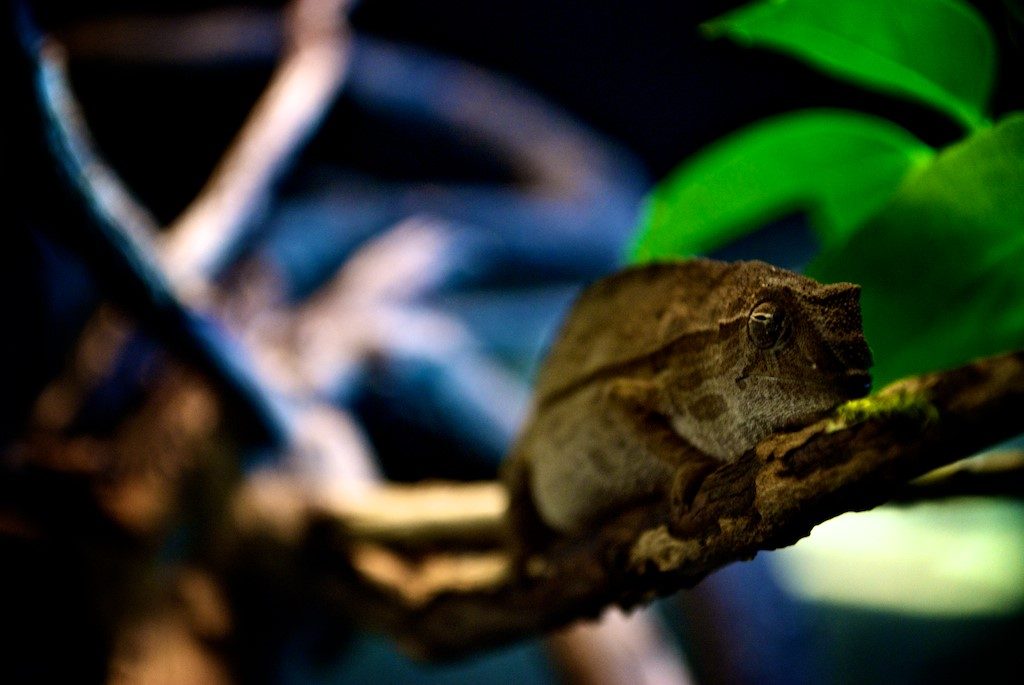CHAPTERS
Navigate to chapter
► Chapter 1: Getting to Know Pygmy Leaf Chameleons
► Chapter 2: Pygmy Leaf Chameleon Requirements
► Chapter 3: Tips in Buying Pygmy Leaf Chameleons
► Chapter 4: Habitat for Your Pygmy Leaf Chameleons
► Chapter 5: Feeding Your Pygmy Leaf Chameleon
► Chapter 6: Pygmy Leaf Chameleon Husbandry
► Chapter 7: Breeding Your Pygmy Leaf Chameleon
► Chapter 8: Keeping Your Chameleon Healthy
► Chapter 9: Frequently Ask Questions about Chameleons
Chapter 1: Getting to Know Pygmy Leaf Chameleons

Pygmy Leaf Chameleons may often times look like a frog, your outcast classmate, the new kid in school, your weird–at – first – but – turns – out – a – cool roommate, or unexpected sidekick. In whatever attitude or mood it appeals, you can expect it to be docile and it will definitely pique your interest. After all only interesting people will acquire an interesting kind of pet!
Pygmy leaf chameleons are may be relatively small and handy but it may not be the right choice for everyone. Before you decide whether or not it might be the right pet for you and your family, you need to learn and invest a significant amount of time in getting to know these creatures because it may not be suitable for first time chameleon owners; this breed has additional husbandry requirements which may be difficult if you haven’t had any experience of handling a chameleon before.
In this chapter you will receive an introduction to the Pygmy leaf chameleons breed including some basic facts, different types info, as well as the brief history of how it came about. This information, in combination with the practical information about keeping chameleons in the next chapter, will help you decide if this is the perfect pet companion for you.
Facts about Pygmy Leaf Chameleons
In this section you’ll find some interesting fun facts about Pygmy leaf chameleons, their breed origin, body features, breed types and history.
Pygmy leaf chameleons are also referred to as
stump-tail chameleons. They are included in one of the smallest vertebrates known to mankind, and because of its relatively small size, keeping one as a pet is becoming more popular among reptile owners or reptile enthusiasts. It’s not dangerous to handle if you’re a first time reptile owner compared to a snake, and does not need too much maintenance compared to baby alligators or other quite large creatures. It’s just handy, interesting, and can also be adorable. Chameleons are part of the iguana, and lizard family.
These creatures are native to montane forests, and often occupy lower shrubs, forest canopies or pretty much an area where there is little sunlight. You might think they are boring or not outspoken as an animal, but they stay out of everyone’s way especially in the forests for a very good reason – they need to survive. Their small size can easily be eaten by all the wild creatures in the forests, or they can be simply stump to death by the huge creatures or things surrounding them.
Chameleons are generally known to disguise as ordinary things, making them quite “invisible” to the untrained eye. This evolution is for survival purposes; pygmy leaf chameleons for instance, have evolved to blend in and appear as a dead leaf, twigs or grasses found in their natural habitats so that they can’t become an easy prey to the predators. This is also precisely the reason why the word and act of “camouflage” came about. The term is usually used in military to help them during combat – their camouflage uniform resembles that of a green plant, or terrain looking design for the mere purpose of not being seen by the enemy.
Humans found it fascinating that chameleons can hide in plain sight – a very interesting feature indeed, however if you are keeping one as a family pet, this can be quite challenging, so don’t make them feel that they are threatened. Once you get to know them and their behaviors, they will eventually show you their true colors.
Fortunately, unlike other reptile creatures, most pygmy leaf chameleons are very docile and friendly animals. However, it is important to take note that since they are small and has “hiding” abilities; it should mostly be a pet for observation, much like a snake or a fish, and should not be handled unless necessary. Chameleons have a tendency to vibrate or buzz if they feel threatened by predators, insects or even by unnecessary human touch. They are quite sensitive, and what they lack in size makes up for their “superb abilities.” The weird thing is if you are the owner or keeper, these creatures seem to be calm and doesn’t feel intimidated, that’s why it’s important to get to know them so they can trust you.
Pygmy leaf chameleons being a reptile will have an unusual feeding habit or quite weird diet choices. For most people especially those who already have an experience in taking care reptiles like iguanas or lizards, Pygmy leaf chameleons are low maintenance and can be manageable that is why they are increasingly becoming popular as a pet despite its rarity. Like any other animals or family pets for that matter, pygmy leaf chameleons will need to be maintained and provided with adequate living environment, later on in this book we will tackle about the things you need in order to take care of your chameleon.
The pygmy leaf chameleon has a small and relatively elongated body type. Its adult length is about 8 – 9 cm or
3 – 3.5 inches. The smallest recorded pygmy chameleon so far is only 2.5 cm or 1 inch! These kinds of chameleons have a variety of shade that usually have a brown – color pattern and green skin surface to help them blend in their environment. They are called pygmy leaf because aside from their natural shade, they also resemble a leaf litter found in the forest floor.
Unfortunately, you can keep a pygmy leaf chameleon in just a few years. It’s so short; you might think that knowing them doesn’t even scratch the surface. Their average lifespan is between 1 and 3 years only. So if you do decide to acquire one or more and keep them as pets, don’t get too attached because it will only break your heart, you’re lucky if they lived up to their maximum.
One of the main factors that will keep your chameleon alive for at least a longer period is if you take care of it properly. Providing adequate shelter or living environment, proper diet, and care for when they are ill can definitely count if you want them to be around longer than the average. The breed is quite healthy in general as long as you take care of them properly. Like many pets, however, pygmy leaf chameleons are prone to health issues such as lethargy, Metabolic Bone Disease, skin problems, burns head and neck issues, and other body syndromes which will also be tackled in the next few chapters later on in this book.
Different Breeds of Pygmy Chameleons
In this section, you will learn the different breeds of Pygmy Chameleons – their physical characteristics, a snapshot of their origin and other important details you need to consider before acquiring them. Not all of the breeds listed below are suitable for you and some may also not be available in your area, so be sure to read the common facts and also try doing a bit of research if you have selected a pet pygmy breed. Chameleons are still rare at the time of this writing, you’d be lucky if you can find a variety of these breed in your location.
Bearded Pygmy Chameleonthese
Scientific Name: Rieppeleon brevicaudatus
Description:
- The bearded pygmy has a small “beard” of scales that protrude from the bottom of the chin in both sexes
- Generally light brown in color
- Has a striped or splotched pattern resembling a wilted leaf
- During courtship, tends to have shades of yellow, red and green
Range: Can be found in the Eastern Usambara and Uluguru Mountains of Tanzania.
Spectral Pygmy Chameleon
Scientific Name: Rhampholeon spectrum
Description:
- Spectral Pygmy Chameleon shades and patterns are usually browns, grey, and sometimes red tones.
- Diagonal stripes can be seen along their flanks
- A small, soft nasal process is present that appears like that of a small horn.
- Their tails are also longer than that of brevicaudatus.
Range: These breed can be found in Cameroon and Congo in wild forests.
Continue Reading…
Want to read the entire thing?

